Overview
Leaves are identified by their shape and size, by the way in which the blade meets the stem and the petiole, and by their surface features.
Leaf parts

Basic parts of the leaf include the blade (the flat, expanded portion), the petiole (the stalk of a leaf), and sometimes stipules, flanking the leaf where it meets the stem.
Petioles may be absent. In this case, the blade meets the stem, and the leaf is considered sessile.
If a petiole is present, it usually attaches to the edge of the blade, as in the first leaf shown here. Sometimes, however, the petiole joins the blade at right angles to the blade, and not at the edge. These leaves are called "peltate" leaves.
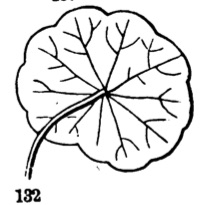
Simple vs. compound leaves
Simple leaves have one expanse of blade.
Compound leaves have many separate leaflets (separate bits of blade).
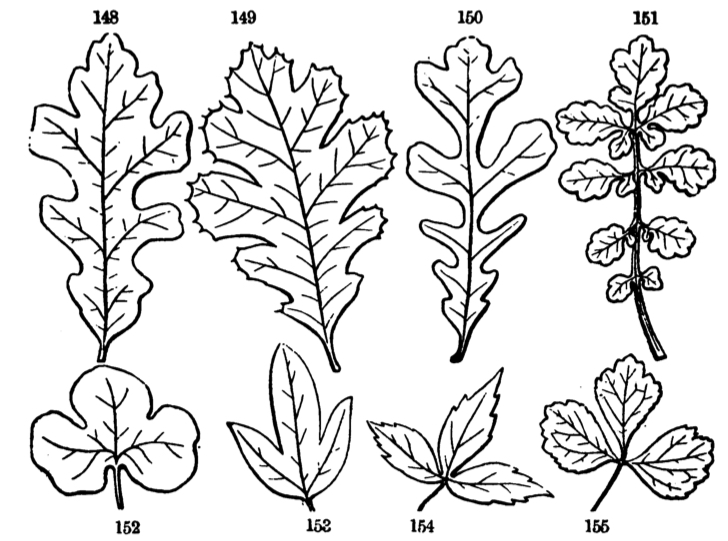
One way of determining whether you are looking at a lot of simple leaves or just a lot of leaflets in a compound leaf is to look for axillary buds. There are no axillary buds in the axils of leaflets; there are in the axils of leaves.
Palmate vs. pinnate
Patterns of leaf veins, leaf lobes, or arrangement of leaflets in a compound leaf (below) may be described as pinnate or palmate.
In a pinnate arrangement, there is a central axis with side branches.
In a palmate arrangement, there is no central axis, and all branches radiate from a central point.
The term "pinna" means feather, and the term "palm" means...palm.
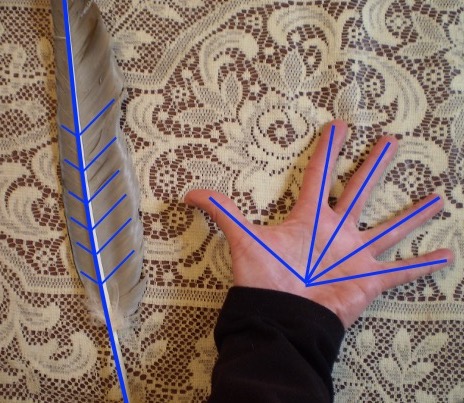
Leaf veins may be described as pinnate or palmate:
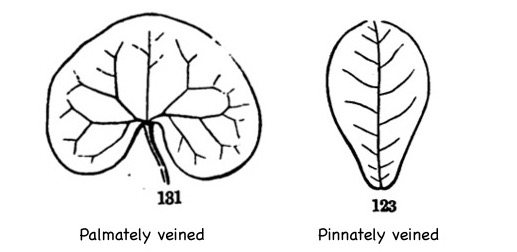
Note: Leaf veins may also be parallel. This is characteristic of monocots, like grasses, lilies, palms, and others.
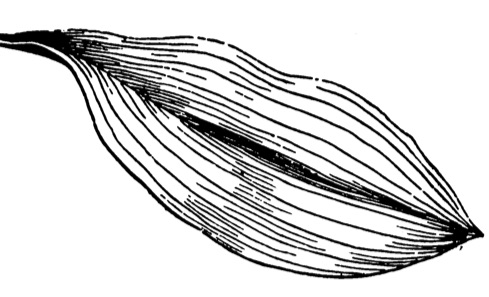
Leaf lobes may be described as pinnate or palmate:

Leaflet arrangement in compound leaves may be described as pinnate or palmate:
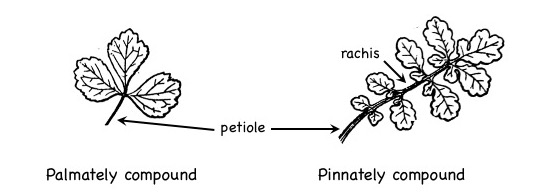
(Note: in pinnately compound leaves, the main axis of the leaf to which leaflets are attached is called the rachis.)
Pinnately compound leaves may be twice-pinnate, having two orders of branching that end in leaflets, or may be further divided. The leaf below is twice-pinnate or doubly-pinnate:

Check your understanding: